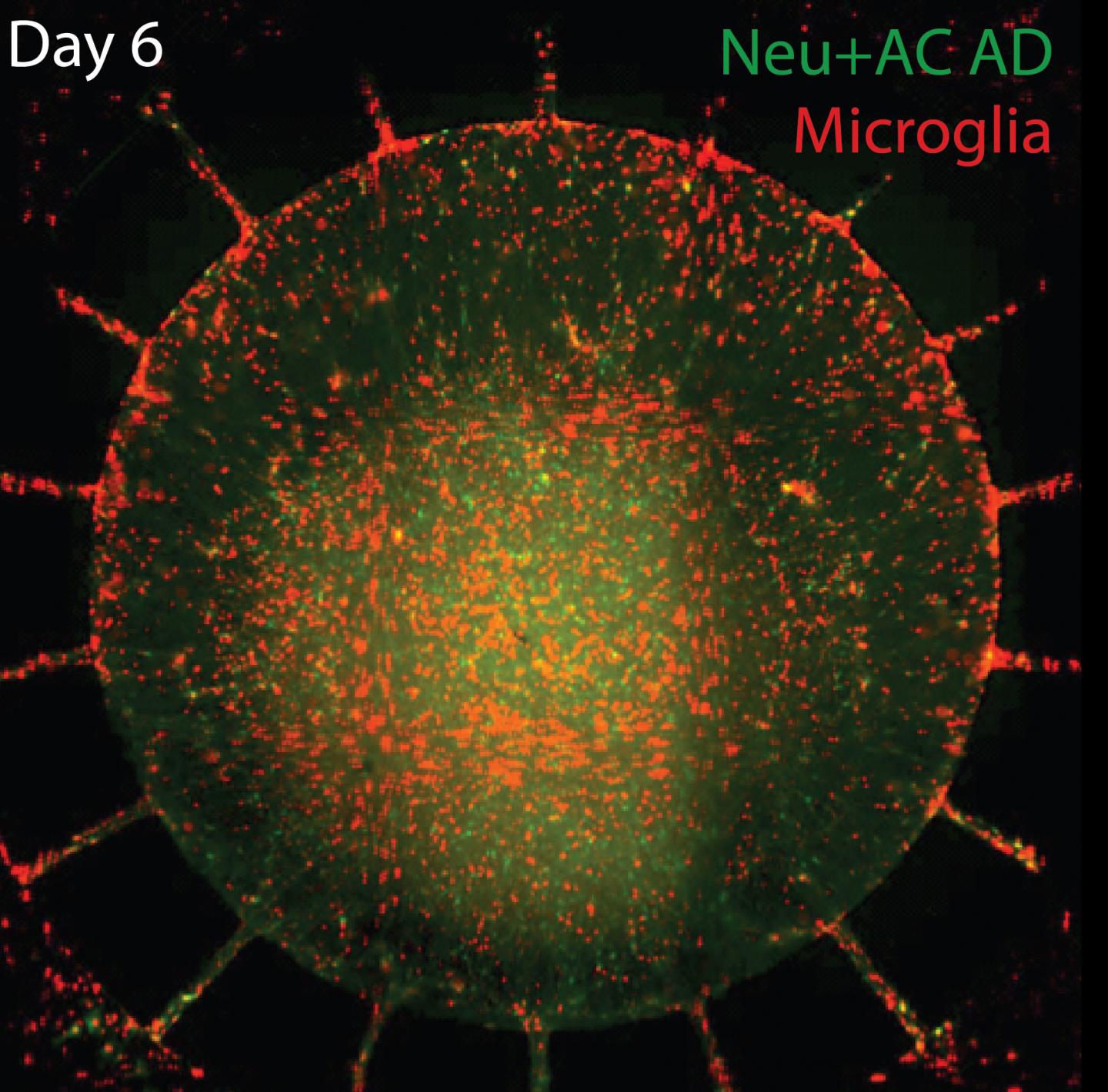A New 3-D Human Model for Alzheimer’s Disease Research

Six days after activated microglia (red) were added to the outer chamber of the new microfluidic device, the inflammatory cells migrate through channels into the inner chamber, containing cultured neurons and astrocytes (green) with gene variants associated with familial Alzheimer's disease. Upon arrival in the inner chamber, the microglia directly attack neurons and raise levels of key inflammatory factors.
Study in a Sentence: Researchers recently developed a novel model of Alzheimer’s disease. The model platform uses microchannels and two chambers to mimic blood flow and allow important cellular factors to interact, thus recapitulating the molecular mechanisms of the disease process.
Healthy for Humans: This model provides a versatile, modifiable experimental system that can be used to better understand the mechanisms of disease and potentially discover human-relevant drugs or therapeutic targets for Alzheimer’s disease. The researchers were able to halt the inflammation process causing damage to brain cells by blocking two molecules in microglial cells, a key mediator of the inflammation in the brain that is associated with Alzheimer's.
Redefining Research: This new Alzheimer's model improved on the previous “Alzheimer’s in a dish” developed by this group by incorporating the key cellular players of the inflammatory process in the brain associated with Alzheimer's.
References
- Park J, Wetzel I, Marriott I, et al. A 3D human triculture system modeling neurodegeneration and neuroinflammation in Alzheimer's disease. Nat Neurosci. 2018;21:941-951.








